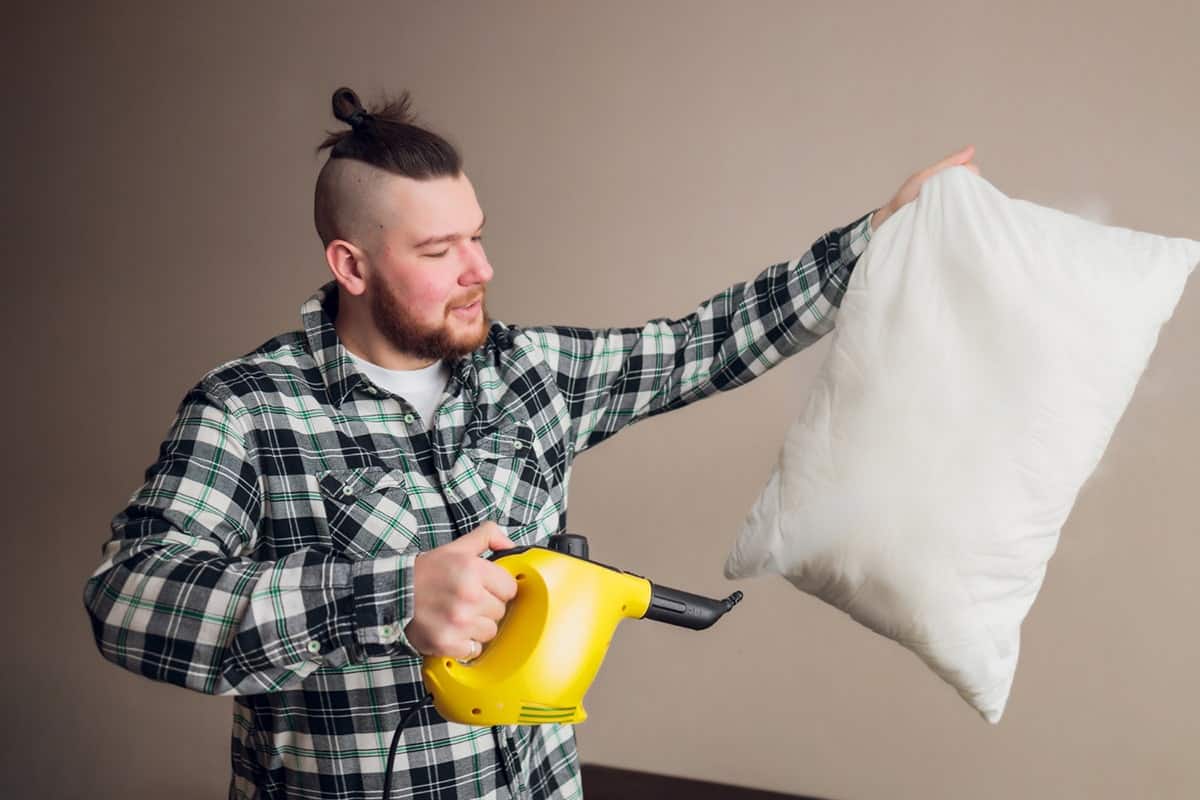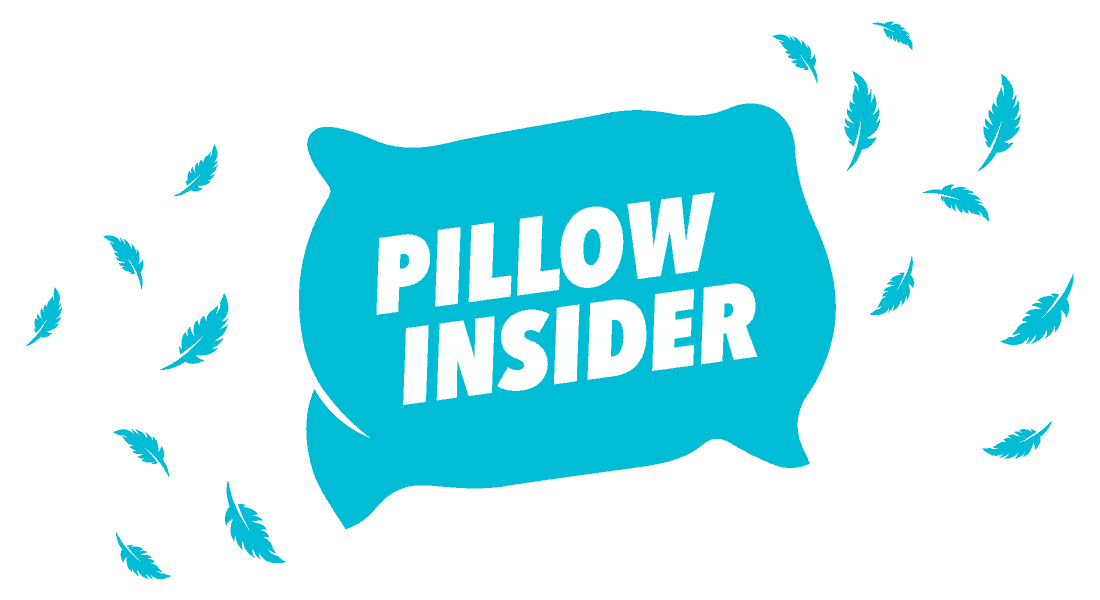In order to create a healthy sleep environment, it’s important to sanitize and disinfect your pillows and other bedding items often. However, truth be told, you cannot wash every pillow type.
There are several bed pillows like latex or memory foam pillows that require delicate care and any contact with water may disintegrate their tender filling. For such pillows, machine wash is simply not an option and will destroy your pillow within minutes.
So, how do you sanitize and disinfect pillows without washing? With a little care and some crucial know-how about the type of pillow you are dealing with, the sanitizing and disinfecting process becomes incredibly easy.
How to Sanitize and Disinfect Pillows Without Washing
While some pillows like latex and memory foam pillows cannot be washed in the washing machine, they still require proper cleaning and sanitizing every now and then to keep them fresh and disinfected.
There are a variety of options you could opt for when cleaning your special, non-washable pillows. You may use your vacuum cleaner with the upholstery attachment to suck out basic dust, debris, human dander, or pet hair scattered all over. Lint rollers are also a popular and cheap option to dust away unwanted particles and it does not require any additional moisture or chemical sprays.
However, you may find an odd spot, spill, or stain on your non-washable pillows, in which case spot-cleaning is the best and most effective option. Spot cleaning your bed pillows with some homemade mixtures including baking soda, washing soda or vinegar can freshen your pillows without washing, leaving them germ free smelling fresh.
Getting Rid of Mildew and Bad Smell
Pillow care is crucial, even for non-washable pillows. Germs, bacteria, mold, or mildew may grow and thrive on your pillow surface if proper sanitization is not carried out. This may lead to several health concerns, especially poor skin conditions and allergies. Growing fungus and mildew may also leave pungent odors which are bad news for you and your pillow.
To prevent mildew growth and bad odors, you can simply sprinkle small amounts of baking soda on the pillow and leave it to rest for 30-60 minutes. With an upholstery attachment, use your vacuum cleaner to remove the baking powder which will have eliminated any lingering smells and dry pores. Baking soda is highly effective against potential bacterial pathogens, so all traces of mold and mildew will be dealt with using this method.
Additionally, you can also spray a light mist of white vinegar over your pillow. White vinegar is safe, natural, and extremely effective in combating mold and mildew. You can even soak a clean sponge in white vinegar and lightly dab it over your pillow and leave it for a few hours. Scrub it off with another clean sponge or a light brush. If you still spot any stains or residue, wipe those away with some rubbing alcohol on the top of a cotton swab.
Ensure that your pillows are aired out for a day or longer on a non-humid day. Otherwise, keep it in a well-ventilated room, or near a fan so all traces of moisture from the cleaning solutions are removed. Alternative, you can also sprinkle some borax on your pillow and vacuum the powder off after an hour. A small amount of borax can also be mixed with two cups of hot water and using a clean paper towel, you can dab and rub away any stains on your pillow. Clean your pillow using another paper towel and let it dry out for an hour or two.
You can also use some lavender oil when cleaning your memory foam pillows since lavender essential oils are known to have disinfectant properties.
Spill Control
No matter how careful you are, spills happen! In case of a spill on your non-washable pillow, simply use the handy spot-cleaning method that will remove the stain before you know it. Start by removing the pillow cover. You can wash it in the washing machine separately.
Using a clean paper towel or a piece of white cloth, blot up as much of the stain or liquid as possible before it seeps into the filling. Using an absorbent material like a cotton cloth, white towel, or kitchen roll can be very effective. Avoid using dyed fabrics as it may make things worse by transferring the color of the cloth on to the pillow.
Once all the moisture has been removed, simply wipe the area again using a damp sponge or white cloth. Continue wiping gently until the spilled liquid stain is no longer visible. Air dry your pillow until all the moisture has been dried properly. In addition to this, if you spill sticky liquids like juices or syrups, blot the liquid away with a clean paper towel dipped in a mild soapy solution.
Air dry
Non-washable bed pillows react poorly to moisture and may disintegrate if proper drying procedures are not followed. To ensure that your pillow is sanitized, air drying is a must! Even if you cannot chuck your bed pillows in a washer, leaving them out in the direct sunlight for a few hours, every three to six months, will eliminate any bacteria and traces of mildew. This will keep your pillow smelling and feeling fresh, without traces of any harmful germs.
UV light and high temperature of sun rays are known to kill microorganisms, leaving your pillows germ-free. While this may not get rid overgrown mildew or bacteria, it is extremely effective for routine pillow care. In fact, this method may also get rid of any dust mites on your pillow as well as deodorize the filling from bodily sweat and oil and pungent odors.
In case you have spot-cleaned your pillow, but have not properly air dried it, your pillow may become host to bacteria and fungus. To avoid this, always remember to air dry your pillow after spot-cleaning or even using borax or baking powder to sanitize it.

Frequently Asked Questions
Can you sanitize pillows in the dryer?
A tumble dryer is extremely effective in laying waste to harmful bacteria and microorganisms. Leaving your pillow or pillowcase for thirty minutes inside a dryer on a high heat setting is the most effective way to kill viruses. In fact, you can eliminate bacteria and dust mites from your pillow by running it through a tumble dryer. However, not all pillows can withstand the wash cycle and spin cycle and may crumble or crack in high temperatures. To avoid this, always read labels and washing instructions for pillow care provided with your products.
If you put your pillows in the dryer, you can add a few clean dry towels to wick any traces of moisture away. Adding one or two tennis balls or dryer balls will help fluff your pillow during the drying cycle or you can refer to this guide to re-fluff your pillows.
Can you spray Lysol on bed pillows?
Yes, you can spray Lysol on your bed pillows, bed sheets, mattress and other bedding to eliminate any germs or bacteria. Be sure to let your pillow dry completely before making any contact with your skin. Lysol is a safe option to use for sanitizing your pillows as the molecules you come in contact with in your environment are the same as those on your bed, so it works the same way.
Lysol is also proven to be extremely effective at killing airborne germs. It is particularly useful for most solid surfaces such as bathroom and kitchen counters, but the product comes in a range of milder options as well which are recommended for eliminating germs and odors from bedding and upholstery.
